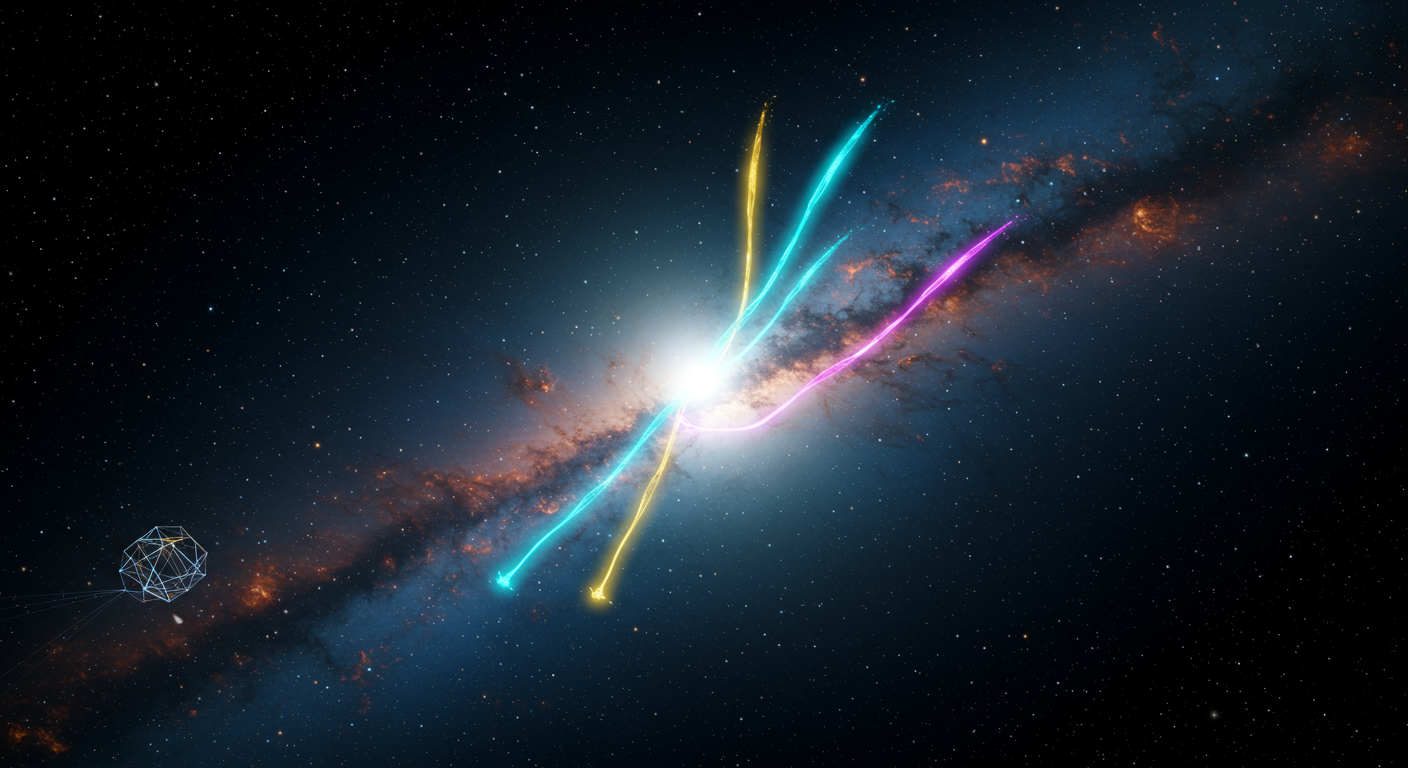Strengthening the bound on the mass of the lightest neutrino with terrestrial and cosmological experiments

The mass of the neutrino is one of the most significant pieces of evidence for physics beyond the Standard Model. While neutrino oscillation experiments have conclusively shown that neutrinos have mass by measuring the differences between their mass-squared states, the absolute mass scale remains an open question. In our paper, “Strengthening the bound on the mass of the lightest neutrino with terrestrial and cosmological experiments”, published in Physical Review D (10.1103/PhysRevD.103.123508), we tackle this fundamental question by performing a comprehensive global analysis that combines the latest cosmological and terrestrial data.
This work was a major effort by the The GAMBIT Cosmology Workgroup, including our group member Will Handley, along with Patrick Stöcker, Csaba Balázs, Sanjay Bloor, and many others. Our primary goal was to derive the most robust and precise upper limit on the mass of the lightest neutrino to date.
A Multi-Pronged Approach to Weighing a Ghost
To achieve this, we employed a sophisticated Bayesian analysis within the modular GAMBIT framework, leveraging its dedicated cosmology module, CosmoBit. This allowed us to self-consistently integrate a vast array of observational data, each providing a unique piece of the puzzle:
- Cosmic Microwave Background (CMB): We used the final public data release from the Planck satellite (1807.06209), whose temperature, polarization, and lensing maps are exquisitely sensitive to the sum of neutrino masses ($\sum m_\nu$). Massive neutrinos suppress the growth of cosmic structures, leaving a distinct imprint on the CMB.
- Baryon Acoustic Oscillations (BAO): Measurements of the characteristic BAO scale from galaxy surveys like 6dF, SDSS-MGS, and BOSS DR12 (1607.03155) provide a standard ruler to map the expansion history of the Universe, which is also affected by neutrino mass. We implemented a novel method to self-consistently calculate the correlation between overlapping BAO datasets, improving the statistical rigor of the combination.
- Terrestrial Experiments: We incorporated the latest global fits to neutrino oscillation data from
NuFit 4.1, which constrain the mass-squared splittings. This is crucial for translating a cosmological bound on $\sum m_\nu$ into a limit on the lightest mass eigenstate, $m_{\nu_0}$, using physically realistic mass models (Normal and Inverted Hierarchies). - Other Probes: We also included data from Type Ia Supernovae (Pantheon compilation) and Big Bang Nucleosynthesis (BBN) to constrain other cosmological parameters and break degeneracies.
Pushing the Limits of Neutrino Mass
A key aspect of our analysis was to move beyond the simplifying (but unphysical) assumption of three degenerate-mass neutrinos, which had been common in previous cosmological studies. By properly accounting for the mass splittings, our results are far more robust.
Our main findings set stringent new benchmarks:
- Assuming Normal Mass Ordering, we find the mass of the lightest neutrino is less than 0.037 eV at 95% confidence. This corresponds to a sum of masses $0.058 < \sum m_\nu / \mathrm{eV} < 0.139$.
- For the Inverted Ordering, the bound is slightly weaker at less than 0.042 eV, corresponding to $0.098 < \sum m_\nu / \mathrm{eV} < 0.174$.
These limits are significantly stronger than previous constraints and bring the inferred absolute mass scale down to a level comparable to the mass splittings themselves. Furthermore, we made our analysis robust by marginalizing over the effective number of relativistic species, $N_\mathrm{eff}$, which accounts for potential new radiation-like particles or modified thermal histories in the early Universe. Our results demonstrate the remarkable power of combining diverse, high-precision datasets within a principled statistical framework to probe fundamental physics. This work lays a robust foundation for the next generation of experiments aiming for an eventual direct measurement of the neutrino mass scale.

Content generated by gemini-2.5-pro using this prompt.
Image generated by imagen-3.0-generate-002 using this prompt.